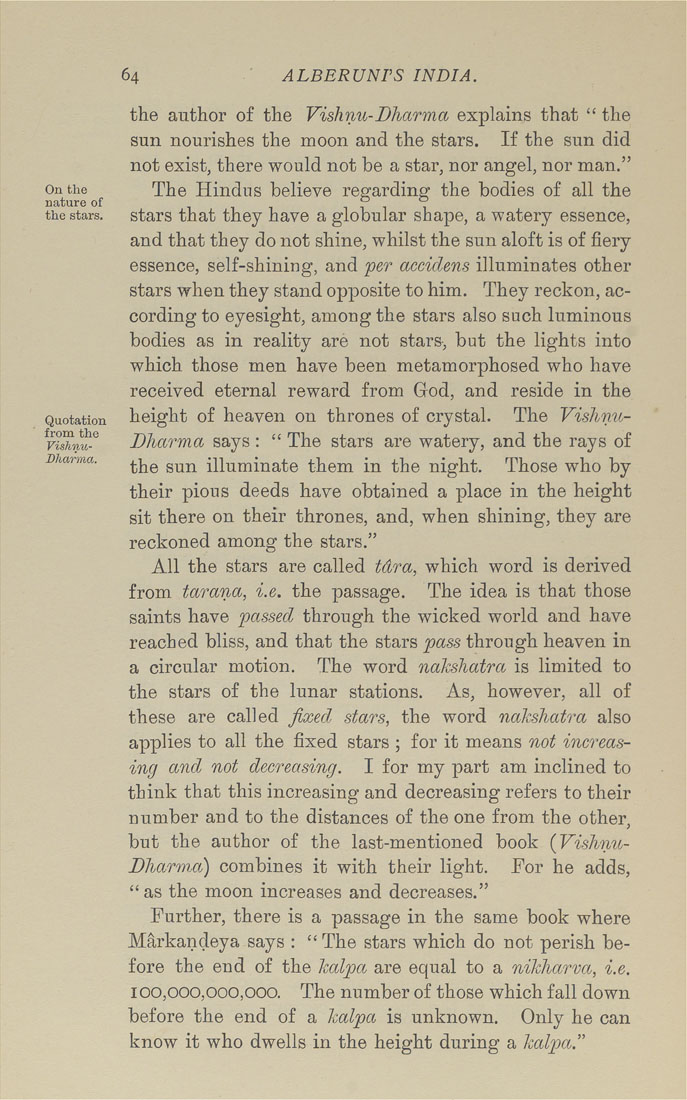64
ALBERUNTS INDIA.
On the
nature of
the stars.
Quotation
from the
Vishnu-
Dharma.
the author of the Vishnu-Dharma explains that " the
sun nourishes the moon and the stars. If the sun did
not exist, there would not be a star, nor angel, nor man."
The Hindus believe regarding the bodies of all the
stars that they have a globular shape, a watery essence,
and that they do not shine, whilst the sun aloft is of fiery
essence, self-shining, and per accidens illuminates other
stars when they stand opposite to him. They reckon, ac¬
cording to eyesight, among the stars also such luminous
bodies as in reality are not stars, but the lights into
which those men have been metamorphosed who have
received eternal reward from God, and reside in the
height of heaven on thrones of crystal. The Vishnit-
Dhctrma says : " The stars are watery, and the rays of
the sun illuminate them in the night. Those who by
their pious deeds have obtained a j)lace in the height
sit there on their thrones, and, when shining, they are
reckoned among the stars."
All the stars are called tdra, which word is derived
from tarana, i.e. the passage. The idea is that those
saints have pctssed through the wicked world and have
reached bliss, and that the stars pass through heaven in
a circular motion. The word nakshatrct is limited to
the stars of the lunar stations. As, however, all of
these are called fixed stars, the word nakshatra also
applies to all the fixed stars ; for it means not increas¬
ing and not decreasing. I for my part am inclined to
think that this increasing and decreasing refers to their
number and to the distances of the one from the other,
but the author of the last-mentioned book (Vishnu-
Dharm,ct) combines it with their light. For he adds,
"as the moon increases and decreases."
Further, there is a passage in the same book where
Markandeya says : " The stars which do not perish be¬
fore the end of the kalpct are equal to a nikharvct, i.e.
100,000,000,000. The number of those which fall down
before the end of a kalpct is unknown. Only he can
know it who dwells in the height during a kctlpct."
|








